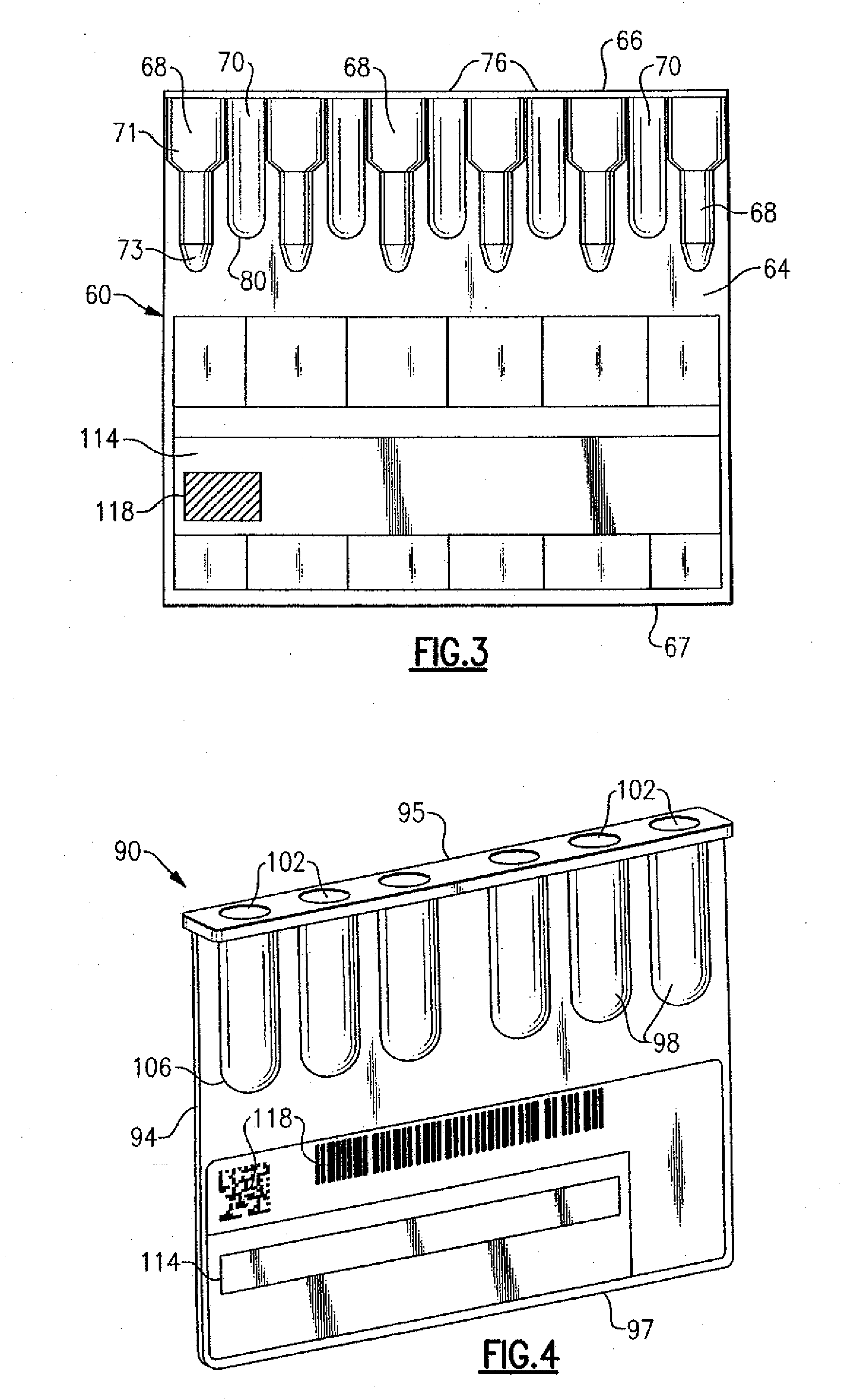Diluent wells produced in card format for immunodiagnostic testing
a technology of immunodiagnostic testing and dilution wells, which is applied in the field of immunodiagnostic testing, can solve the problems of requiring new hardware and software to control the movement and placement of disposable dilution wells, and requiring a relative complex cleaning apparatus, so as to improve the efficiency of testing. the effect of dilution wells and improved the efficiency of testing
- Summary
- Abstract
- Description
- Claims
- Application Information
AI Technical Summary
Benefits of technology
Problems solved by technology
Method used
Image
Examples
first embodiment
[0018]With the preceding background and referring to FIGS. 2 and 3, there is shown an immunodiagnostic test card 60 made in accordance with a The immunodiagnostic test card 60 is similar to the preceding and defined by a flat planar member 64, as well as a plurality of test chambers 68 that are similarly supported by the planar member, also as previously described and disposed in spaced parallel relation in a substantially vertical orientation. Each of the test chambers 68 according to this embodiment is defined by an open-ended upper cylindrical section 71 having a diameter which is larger than a lower cylindrical section 73, the bottom of the lower cylindrical section being close-ended to define a vertical well-like structure. The chambers 68 as well as the test card 60 can be made from a plastic or other suitable material wherein the test chambers can be integrally formed, such as by blister packaging, or can be glued, welded or otherwise affixed such that they are supported by ...
second embodiment
[0022]Referring to FIG. 4, an immunodiagnostic test card 90 is provided. As in the preceding, the immunodiagnostic test card 90 is defined by a substantially flat planar member 94 having respective top and bottom sides 95, 97. The planar member 94 is preferably made from a moldable plastic such as PVC, polyethylene or polystyrene, which includes a plurality of integral vertical columns or wells 98 that are arranged in parallel spaced relation. As in the preceding, each well 98 includes an open upper end 102 and a closed lower end 106 defined by a substantially cylindrical structure that permits a volume of liquid to be contained therein. The wells 98 can be glued or welded to the planar member 94, or as in the present embodiment can be molded therefrom. In this specific embodiment, no patient sample test chambers are provided and the test card 90 only contains the dilution wells 98. In an alternative version, the planar member can releasably receive separate dilution chambers (not ...
PUM
| Property | Measurement | Unit |
|---|---|---|
| diameter | aaaaa | aaaaa |
| Rh | aaaaa | aaaaa |
| compatibility testing | aaaaa | aaaaa |
Abstract
Description
Claims
Application Information
 Login to View More
Login to View More - R&D
- Intellectual Property
- Life Sciences
- Materials
- Tech Scout
- Unparalleled Data Quality
- Higher Quality Content
- 60% Fewer Hallucinations
Browse by: Latest US Patents, China's latest patents, Technical Efficacy Thesaurus, Application Domain, Technology Topic, Popular Technical Reports.
© 2025 PatSnap. All rights reserved.Legal|Privacy policy|Modern Slavery Act Transparency Statement|Sitemap|About US| Contact US: help@patsnap.com



